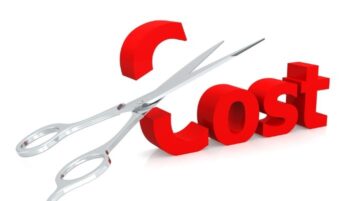Finding ways to cut costs without sacrificing quality or productivity is a crucial part of your role. Identifying cost-saving opportunities not only helps improve your office’s bottom line but also ensures that resources are used efficiently. Here’s how you can effectively identify and implement cost-saving measures in your office.
Start with a Thorough Expense Review
The first step in identifying cost-saving opportunities is to conduct a thorough review of your office’s expenses. Gather all financial records, including invoices, receipts, and expense reports. Analyze these documents to understand where your money is going and identify any areas of excessive spending. Look for patterns or recurring costs that may indicate opportunities for savings.
Evaluate Vendor Contracts
Vendor contracts are a common area where cost savings can be realized. Review your contracts with suppliers, service providers, and contractors. Check for opportunities to negotiate better terms, such as discounts for bulk purchases or extended contracts. Don’t hesitate to compare your current vendors with competitors to ensure you’re getting the best value for your money.
Optimize Resource Utilization
Efficient use of resources can lead to significant cost savings. Evaluate how resources like office supplies, equipment, and utilities are used in your office. For instance, consider implementing practices such as double-sided printing, turning off lights and electronics when not in use, and monitoring heating and cooling systems to reduce utility costs. Small changes in resource utilization can add up to substantial savings over time.
Implement Technology Solutions
Technology can be a powerful tool for reducing costs. Look for software and tools that can automate routine tasks, streamline workflows, and improve efficiency. For example, project management software can help organize tasks and reduce time spent on administrative work, while cloud-based storage solutions can cut down on physical storage costs. Invest in technology that offers a good return on investment and aligns with your office’s needs.
Assess Staffing Needs
Regularly review your staffing levels and roles to ensure that you have the right number of employees and that their skills align with your office’s needs. Evaluate whether there are opportunities to consolidate roles, improve productivity, or even outsource certain tasks. This assessment helps avoid overstaffing and ensures that you’re making the most of your team’s capabilities.
Review and Reduce Overhead Costs
Overhead costs, such as rent, utilities, and insurance, can be significant expenses for your office. Review these costs and explore ways to reduce them. For example, renegotiate your lease terms, switch to more energy-efficient appliances, or shop around for better insurance rates. Reducing overhead costs helps lower your overall expenses and improve financial stability.
Encourage Cost-Conscious Practices
Fostering a culture of cost-consciousness within your office can lead to collective savings. Encourage your team to be mindful of expenses and suggest ways to cut costs. Implement a suggestion program where employees can propose cost-saving ideas. Recognize and reward those who contribute valuable suggestions. Involving your team in cost-saving initiatives helps create a shared commitment to reducing expenses.
Conduct Regular Financial Audits
Regular financial audits are essential for identifying cost-saving opportunities. Schedule periodic audits to review your office’s financial practices, processes, and expense reports. Audits can uncover inefficiencies, redundancies, and areas where costs can be cut. Use the findings from these audits to make informed decisions and implement cost-saving measures.
Analyze and Adjust Spending Patterns
Keep an eye on your office’s spending patterns over time. Analyze trends and fluctuations in expenses to identify areas where costs may be creeping up. Adjust your spending patterns as needed to stay within budget and avoid overspending. Regularly monitoring your spending helps you stay proactive and responsive to changes in your financial situation.
Prioritize Cost-Effective Solutions
When exploring cost-saving opportunities, prioritize solutions that offer the greatest impact with the least disruption. Focus on changes that provide immediate benefits and are easy to implement. Avoid making drastic cuts that could negatively affect productivity or employee morale. Finding a balance between cost savings and operational effectiveness is key to maintaining a well-functioning office.
Final Thoughts
Identifying cost-saving opportunities is an ongoing process that requires diligence and creativity. By conducting thorough expense reviews, evaluating vendor contracts, optimizing resource utilization, implementing technology solutions, assessing staffing needs, and reducing overhead costs, you can effectively manage your office’s expenses. Encourage a culture of cost-consciousness, conduct regular audits, and analyze spending patterns to stay on top of your financial goals. With these strategies, you’ll be well-equipped to find and implement cost-saving measures that benefit your office’s financial health.
